(Listen to the radio version here.)
Back in the late 80s or early 90s, I noticed that depending on where you put the space in the letter string superbowl, you get either “super bowl” or “superb owl.” My understanding of owls is much better than my knowledge of football, so ever since, I’ve celebrated the day with binoculars and camera instead of guacamole and TV.
Russ and I usually go out together in the morning, and sometimes all day, to see what we can. Last year we didn’t see a single owl, superb or otherwise. This year? We had to make it a short day because I’m getting ready for an upcoming trip on Friday, but after subzero temps made Saturday a genuine “three dog night,”1 Russ and I had a three owl morning.
We headed first for Two Harbors, where a bazillion birders were gathered near the harbor, looking at two Great Gray Owls. One seemed reasonably healthy, but the other one seemed to be languishing, making it all the more unconscionable that some photographers were getting way too close.
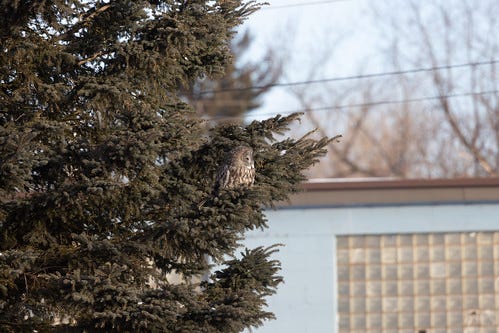
Fun as it was to get some good closeups of the healthier looking one, who moved from a close perch to an even closer one, we didn’t stick around long.
There’s an alley next to a ravine in Two Harbors that has always been my go-to spot for Boreal Owls. The chances are of course low, even during an irruption year, but I always love to check. We parked our car on the residential street and started walking down to the alley when what to my wondering eyes should appear, just 20 feet away, but a Boreal Owl!! It was roosting in a spruce, out of the wind, its feathers fluffed, its breast facing the morning sun, and its face tucked into its back feathers.
People often tell me about how they spent a long time watching a sleeping owl. I’ve personally never seen an owl sleeping, including my own dear education owl Archimedes whom I lived with for 17 years.
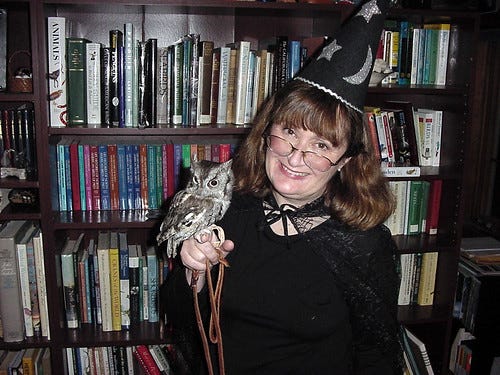
It’s an owl’s very nature to be aware of every sound. If you look closely at an owl who appears to be sleeping, you’re almost guaranteed to see that its eyes are open a slit. It may not look like it, but that owl is looking right at you.
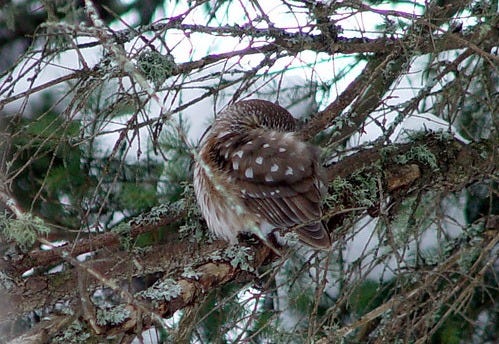
Primates and birds have an area of the retina where the rods and cones are especially concentrated, called the fovea. In the case of owls, the fovea is above the midline, meaning they have exceptionally acute vision of objects below, where their prey would be. And like humans but unlike most birds, an owl’s upper eyelids are larger than the lower ones. When we close our eyes partway, it’s hard for us to see anything clearly, but owls can hold that upper eyelid extremely still and focus perfectly on what’s below. Closing their eyes most of the way blocks sun glare and keeps their bright yellow iris out of sight even as they see intruders quite clearly.
My Superb Owl Sunday Boreal Owl kept the back of its head toward us not because it wasn’t aware of us but because we weren’t close enough to sound threatening. A White-breasted Nuthatch noticed the owl and muttered a few swear words, but the owl stayed put. It wasn’t until a little group of chickadees flew in that the owl moved its head briefly.
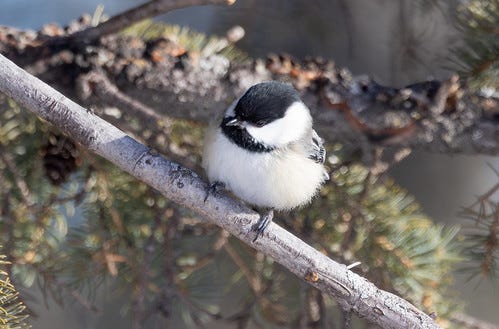
I was delighted when I checked my photos at home to see a tiny blood stain on a few feathers by its lower beak, meaning it had probably feasted on at least one mouse or shrew the night before.
While we were still there, my friend Jim Lind drove by and noticed us. That was like icing on the cake—Jim was with us in that exact same alley on Superb Owl Sunday 2013, during my Big Year, when an actively hunting Boreal Owl appeared even closer to us than this one. Jim spotted that one a split second before I did—virtually nothing gets past him—so I felt pretty proud to have found this one first.
For some reason, Jim always seems to be right there when I see virtually any extraordinary rarity, from the Ross’s Gull in Ashland Wisconsin back in 2001 (before I was taking photos) to the Fork-tailed Flycatcher near Stoney Point in 2022 …
…and the Phainopepla near the McQuade boat landing that same year.
Anyway, our Superb Owl Sunday was going superbly, but we decided to go for a third species, a Snowy Owl in Superior. We drove around the airport without seeing any, so we headed to the refinery where I’d seen an extremely cooperative one on January 29 with my friend Bernie. It took a while, but I found one perched on a pole. It was pretty far away, but with excellent lighting it was easy to see that it had more markings on its forehead than the one Bernie and I had seen.
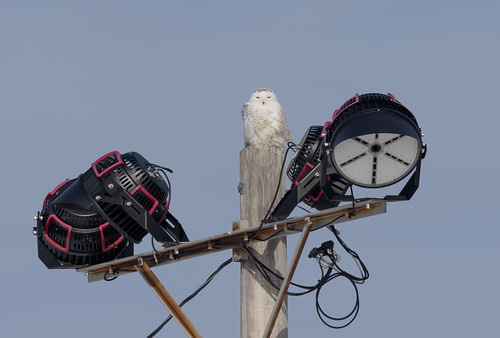

We didn’t see a single eagle to give us any intimations of how a certain football game would go later that day, but our Three Owl Morning was a perfect way to celebrate Superb Owl Sunday.
Before the band, the term “three dog night” referred to a bitterly cold night—one so cold that one would need three dogs to snuggle against in bed to stay warm. The term was commonly used in Australia, but I can’t find confirmation of where it originated.







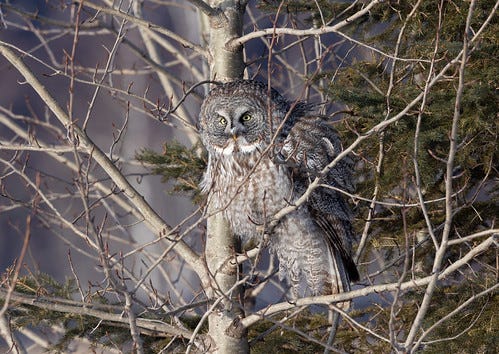


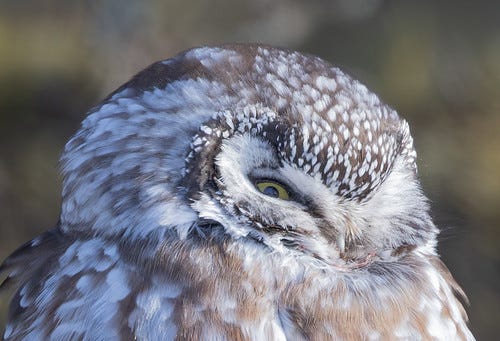


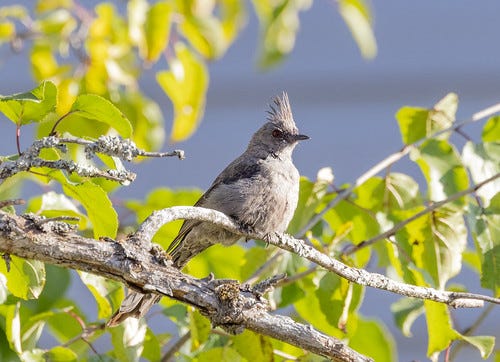

One of these winters, I'm going to venture north to Sax-Zim Bog to look for owls and other northern delights. Eagles are plentiful right now along the Mississippi River. They follow the locks & dams south for good fishing. There are also reports of hundreds at Loess Bluffs NWR in NW Missouri. Have a wonderful trip!
Always delight in your shared knowledge especially like knowing about owls with their eyes open to a crack to keep track of us humans and others!!